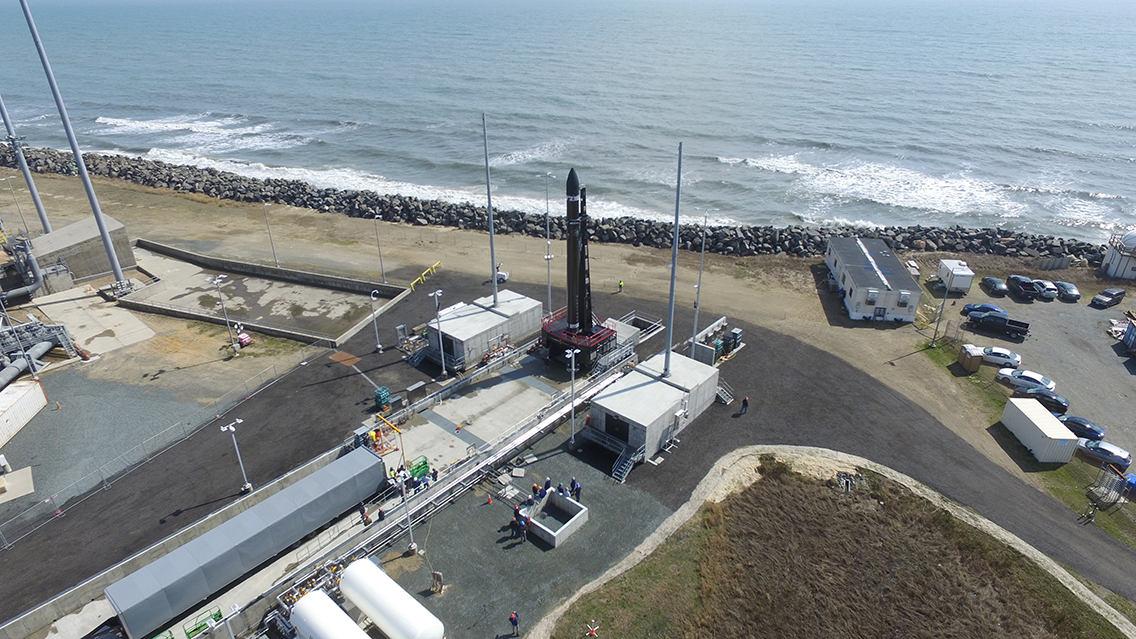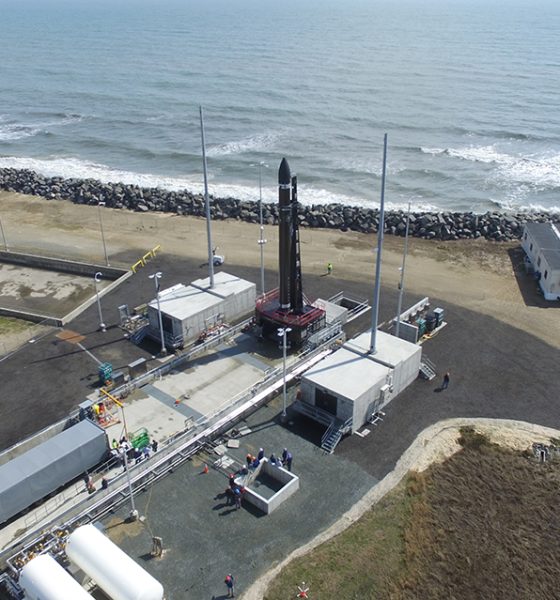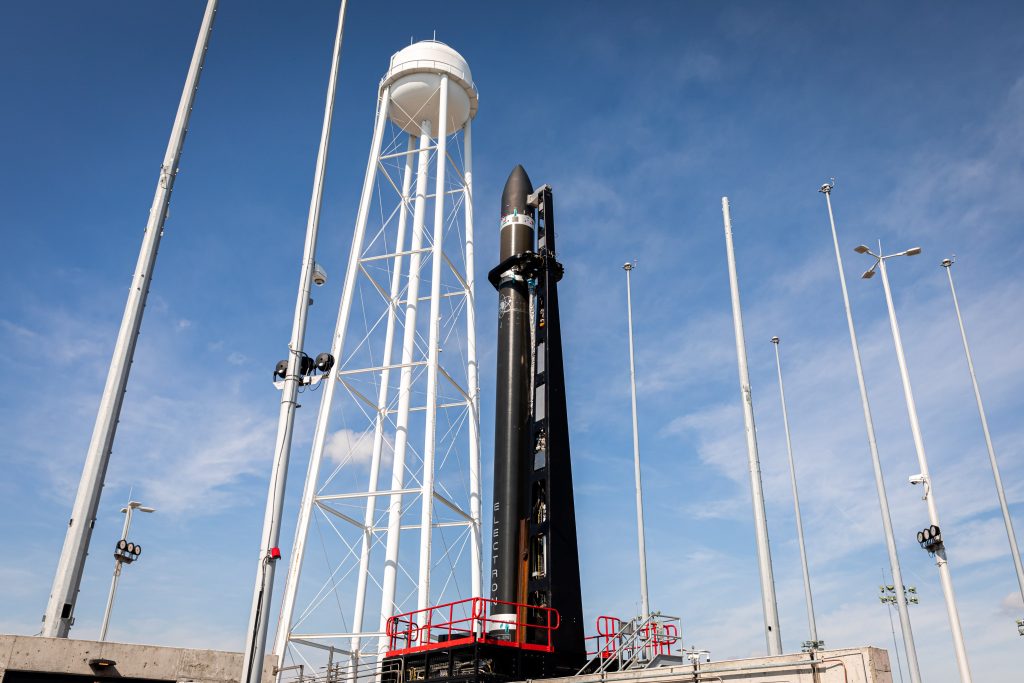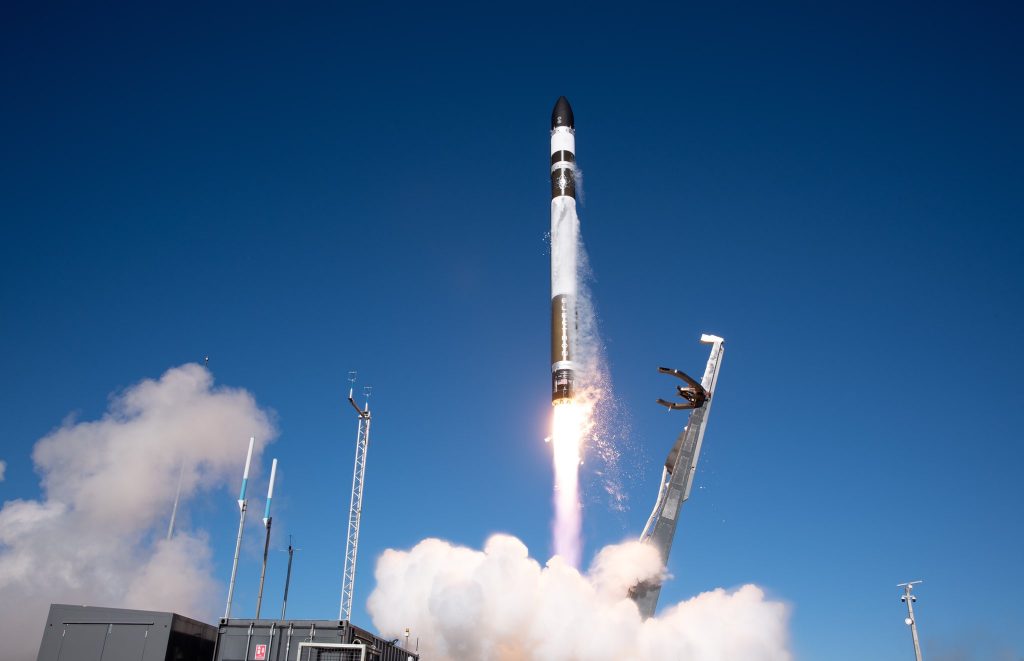

News
Rocket Lab Electron returns to flight as FAA approves launches from the US
Rocket Lab, the space systems company and small satellite launcher, returned to active launch status recently with the successful fourteenth launch of its Electron rocket. The “I Can’t Believe It’s Not Optical” mission marked Rocket Lab’s comeback after suffering an in-flight anomaly during Electron’s thirteenth flight on July 4, 2020.
Just nine weeks after the conclusion of the incident investigation, following its successful return to flight, Rocket Lab has announced that it has been granted a five-year Launch Operator License – permission to launch multiple missions a year – by the Federal Aviation Administration (FAA) for its new Launch Complex 2 in Virginia.

“I Can’t Believe It’s Not Optical,” Electron’s Return to Flight
The thirteenth flight of Electron “Pics or It Didn’t Happen” on July 4 began with a flawless launch from Launch Complex – 1A (LC-1A) in Mahia, New Zealand. During the flight of the second stage, there were indications that Electron had experienced a critical malfunction. Telemetry data confirmed that Electron had encountered an in-flight anomaly that ultimately resulted in the company’s first mission failure and loss of seven customer payloads.
The root cause of the anomaly was quickly tracked down to a single bad electrical connection on the second stage. Less than a month after the incident, Rocket Lab announced that it was able to reconstruct what occurred, make the necessary corrective measures, and ready to return Electron to flight.
Just a few short weeks later on August 24, Electron was on pad LC-1A in New Zealand for pre-flight testing ahead of its fourteenth – and return to flight – mission “I Can’t Believe It’s Not Optical.” The dedicated mission for San Francisco-based information services company, Capella Space, carried a single microsatellite called “Sequoia” to a circular orbit at approximately 500km.
According to a statement provided by Rocket Lab, Sequoia is the “first synthetic aperture radar (SAR) satellite to deliver publicly available data from a mid-inclination orbit over the U.S., Middle East, Korea, Japan, Europe, South East Asia, and Africa.” Sequoia is the first microsatellite in a constellation series that Capella Space says will “provide insights and data that can be used for security, agricultural and infrastructure monitoring, as well as disaster response and recovery.”

The success of “I Can’t Believe It’s Not Optical” marks the thirteenth successful mission and the deployment of Sequoia makes a total of 54 satellites delivered to orbit since Rocket Lab began operation in 2017. Rocket Lab founder and chief executive officer, Peter Beck, congratulated Capella Space on the successful deployment of its first microsatellite and celebrated the entire Rocket Lab team stating that “I’m also immensely proud of the team, their hard work, and dedication in returning Electron to the pad safely and quickly as we get back to frequent launches with an even more reliable launch vehicle for our small satellite customers.”
FAA certifies Electron launches from the US
In addition to LC-1A in New Zealand, Rocket Lab broke ground on a second launchpad located in the United States in late 2018. The launchpad was declared complete in December 2019.
Although operational, Launch Complex 2 located at the Mid-Atlantic Regional Spaceport within NASA’s Wallops Flight Facility on Wallops Island in Virginia still had a few milestones to achieve ahead of the first scheduled launch. In April 2020 an Electron rocket arrived at the pad for integrated systems tests. Two major hurdles left to clear ahead of launching an Electron from LC-2 was receiving a launch operator license from the Federal Aviation Administration (FAA) and receiving NASA certification of the Electron’s Autonomous Flight Termination System (AFTS).
On Tuesday, September 1, Rocket Lab announced that it had received a new 5-year Launch Operator License from the FAA. The license permits California-based launcher and space systems company to launch the Electron rocket from LC-2 multiple times a year without applying for a new license with every launch. This in addition to the Launch Complex 1 license means that Rocket Lab is now licensed to support up to 130 flights of Electron per year.
In addition, LC-1 is expected to expand and bring a second launchpad online, launch complex – 1B, sometime before the end of the year. Beck said, “Having FAA Launch Operator Licenses for missions from both Rocket Lab launch complexes enables us to provide rapid, responsive launch capability for small satellite operators. With 14 missions already launched from LC-1, Electron is well established as the reliable, flight-proven vehicle of choice for small sat missions spanning national security, science and exploration.”
Launch Complex 2 was specifically designed to support responsive missions for NASA and the United States government. The first mission from LC-2 is slated to lift the microsatellite STP-27RM for the United States Air Force as part of the Space Test Program. In 2021 Electron will send NASA’s CAPSTONE mission to a “Near Rectilinear Halo Orbit” (NRHO) around the Moon in support of NASA’s Artemis program.
Even more news…
On Thursday, September 3, Rocket Lab founder Peter Beck will host a webcast to provide an “exciting update” and discuss “the next chapter” of Rocket Lab. The webcast will go live at 2:00 pm ET (18:00UTC).

News
Tesla Full Self-Driving v14.2 – Full Review, the Good and the Bad

Tesla rolled out Full Self-Driving version 14.2 yesterday to members of the Early Access Program (EAP). Expectations were high, and Tesla surely delivered.
With the rollout of Tesla FSD v14.2, there were major benchmarks for improvement from the v14.1 suite, which spanned across seven improvements. Our final experience with v14.1 was with v14.1.7, and to be honest, things were good, but it felt like there were a handful of regressions from previous iterations.
While there were improvements in brake stabbing and hesitation, we did experience a few small interventions related to navigation and just overall performance. It was nothing major; there were no critical takeovers that required any major publicity, as they were more or less subjective things that I was not particularly comfortable with. Other drivers might have been more relaxed.
With v14.2 hitting our cars yesterday, there were a handful of things we truly noticed in terms of improvement, most notably the lack of brake stabbing and hesitation, a major complaint with v14.1.x.
However, in a 62-minute drive that was fully recorded, there were a lot of positives, and only one true complaint, which was something we haven’t had issues with in the past.
The Good
Lack of Brake Stabbing and Hesitation
Perhaps the most notable and publicized issue with v14.1.x was the presence of brake stabbing and hesitation. Arriving at intersections was particularly nerve-racking on the previous version simply because of this. At four-way stops, the car would not be assertive enough to take its turn, especially when other vehicles at the same intersection would inch forward or start to move.
This was a major problem.
However, there were no instances of this yesterday on our lengthy drive. It was much more assertive when arriving at these types of scenarios, but was also more patient when FSD knew it was not the car’s turn to proceed.
Can report on v14.2 today there were ZERO instances of break stabbing or hesitation at intersections today
It was a significant improvement from v14.1.x
— TESLARATI (@Teslarati) November 21, 2025
This improvement was the most noticeable throughout the drive, along with fixes in overall smoothness.
Speed Profiles Seem to Be More Reasonable
There were a handful of FSD v14 users who felt as if the loss of a Max Speed setting was a negative. However, these complaints will, in our opinion, begin to subside, especially as things have seemed to be refined quite nicely with v14.2.
Freeway driving is where this is especially noticeable. If it’s traveling too slow, just switch to a faster profile. If it’s too fast, switch to a slower profile. However, the speeds seem to be much more defined with each Speed Profile, which is something that I really find to be a huge advantage. Previously, you could tell the difference in speeds, but not in driving styles. At times, Standard felt a lot like Hurry. Now, you can clearly tell the difference between the two.
It seems as if Tesla made a goal that drivers should be able to tell which Speed Profile is active if it was not shown on the screen. With v14.1.x, this was not necessarily something that could be done. With v14.2, if someone tested me on which Speed Profile was being used, I’m fairly certain I could pick each one.
Better Overall Operation
I felt, at times, especially with v14.1.7, there were some jerky movements. Nothing that was super alarming, but there were times when things just felt a little more finicky than others.
v14.2 feels much smoother overall, with really great decision-making, lane changes that feel second nature, and a great speed of travel. It was a very comfortable ride.
The Bad
Parking
It feels as if there was a slight regression in parking quality, as both times v14.2 pulled into parking spots, I would have felt compelled to adjust manually if I were staying at my destinations. For the sake of testing, at my first destination, I arrived, allowed the car to park, and then left. At the tail-end of testing, I walked inside the store that FSD v14.2 drove me to, so I had to adjust the parking manually.
This was pretty disappointing. Apart from parking at Superchargers, which is always flawless, parking performance is something that needs some attention. The release notes for v14.2. state that parking spot selection and parking quality will improve with future versions.
Any issues with parking on your end? 14.1.7 didn’t have this trouble with parking pic.twitter.com/JPLRO2obUj
— TESLARATI (@Teslarati) November 21, 2025
However, this was truly my only complaint about v14.2.
You can check out our full 62-minute ride-along below:
Elon Musk
SpaceX issues statement on Starship V3 Booster 18 anomaly
The incident unfolded during gas-system pressure testing at the company’s Massey facility in Starbase, Texas.

SpaceX has issued an initial statement about Starship Booster 18’s anomaly early Friday. The incident unfolded during gas-system pressure testing at the company’s Massey facility in Starbase, Texas.
SpaceX’s initial comment
As per SpaceX in a post on its official account on social media platform X, Booster 18 was undergoing gas system pressure tests when the anomaly happened. Despite the nature of the incident, the company emphasized that no propellant was loaded, no engines were installed, and personnel were kept at a safe distance from the booster, resulting in zero injuries.
“Booster 18 suffered an anomaly during gas system pressure testing that we were conducting in advance of structural proof testing. No propellant was on the vehicle, and engines were not yet installed. The teams need time to investigate before we are confident of the cause. No one was injured as we maintain a safe distance for personnel during this type of testing. The site remains clear and we are working plans to safely reenter the site,” SpaceX wrote in its post on X.
Incident and aftermath
Livestream footage from LabPadre showed Booster 18’s lower half crumpling around the liquid oxygen tank area at approximately 4:04 a.m. CT. Subsequent images posted by on-site observers revealed extensive deformation across the booster’s lower structure. Needless to say, spaceflight observers have noted that Booster 18 would likely be a complete loss due to its anomaly.
Booster 18 had rolled out only a day earlier and was one of the first vehicles in the Starship V3 program. The V3 series incorporates structural reinforcements and reliability upgrades intended to prepare Starship for rapid-reuse testing and eventual tower-catch operations. Elon Musk has been optimistic about Starship V3, previously noting on X that the spacecraft might be able to complete initial missions to Mars.
Investor's Corner
Tesla analyst maintains $500 PT, says FSD drives better than humans now
The team also met with Tesla leaders for more than an hour to discuss autonomy, chip development, and upcoming deployment plans.

Tesla (NASDAQ:TSLA) received fresh support from Piper Sandler this week after analysts toured the Fremont Factory and tested the company’s latest Full Self-Driving software. The firm reaffirmed its $500 price target, stating that FSD V14 delivered a notably smooth robotaxi demonstration and may already perform at levels comparable to, if not better than, average human drivers.
The team also met with Tesla leaders for more than an hour to discuss autonomy, chip development, and upcoming deployment plans.
Analysts highlight autonomy progress
During more than 75 minutes of focused discussions, analysts reportedly focused on FSD v14’s updates. Piper Sandler’s team pointed to meaningful strides in perception, object handling, and overall ride smoothness during the robotaxi demo.
The visit also included discussions on updates to Tesla’s in-house chip initiatives, its Optimus program, and the growth of the company’s battery storage business. Analysts noted that Tesla continues refining cost structures and capital expenditure expectations, which are key elements in future margin recovery, as noted in a Yahoo Finance report.
Analyst Alexander Potter noted that “we think FSD is a truly impressive product that is (probably) already better at driving than the average American.” This conclusion was strengthened by what he described as a “flawless robotaxi ride to the hotel.”
Street targets diverge on TSLA
While Piper Sandler stands by its $500 target, it is not the highest estimate on the Street. Wedbush, for one, has a $600 per share price target for TSLA stock.
Other institutions have also weighed in on TSLA stock as of late. HSBC reiterated a Reduce rating with a $131 target, citing a gap between earnings fundamentals and the company’s market value. By contrast, TD Cowen maintained a Buy rating and a $509 target, pointing to strong autonomous driving demonstrations in Austin and the pace of software-driven improvements.
Stifel analysts also lifted their price target for Tesla to $508 per share over the company’s ongoing robotaxi and FSD programs.








